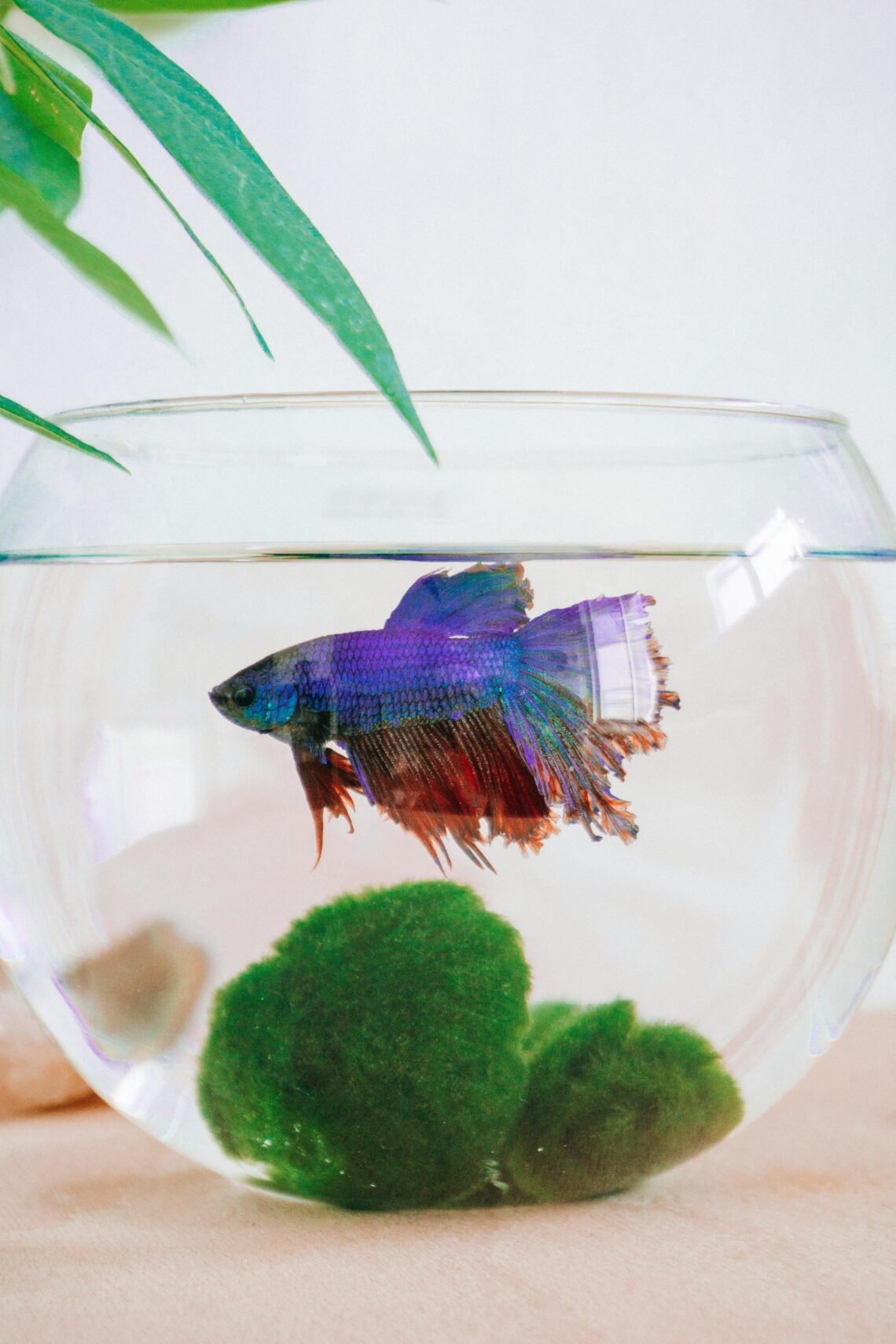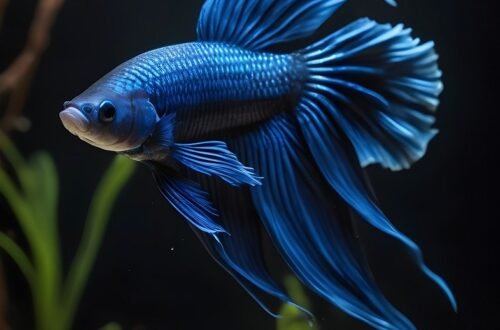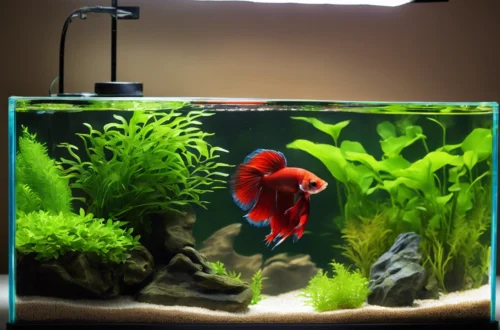Betta fish, with their bright colors and flowing fins, are a popular choice for both new and experienced fish keepers. While they’re often seen as low-maintenance pets, Betta fish have specific needs that must be met to keep them healthy and happy. If you’re a beginner, it’s important to understand the essentials of Betta fish care to ensure your fish thrives in its new environment. In this guide, we’ll cover everything you need to know about Betta fish care, from tank setup to feeding and common health concerns.
Why Betta Fish Make Great Pets
Betta fish, also known as Siamese fighting fish, are native to the slow-moving waters of Southeast Asia. They’re hardy, adaptable, and known for their vibrant colors and distinct personalities. Bettas are popular with beginners because they’re relatively easy to care for, but they still require proper attention to stay healthy.
1. Setting Up the Ideal Betta Tank
Many people mistakenly believe Bettas can thrive in tiny bowls, but in reality, they need space and clean water to live long, healthy lives. Proper tank setup is essential for Betta care.
1.1 Tank Size
The first step in Betta care is choosing the right tank. While Bettas are small fish, they require at least a 5-gallon tank to thrive. A larger tank provides better water quality, more swimming space, and reduces stress for your Betta.
- Why 5 gallons? A larger tank maintains more stable water conditions, and Bettas need space to swim. A bigger tank also reduces the frequency of water changes.
For more on setting up a Betta tank, check out Setting Up a Betta Fish Tank: A Step-by-Step Guide for Beginners.
1.2 Filtration and Water Quality
Bettas are hardy, but they still need clean water to stay healthy. A filter helps remove waste, toxins, and uneaten food, ensuring a stable environment. Make sure the filter you choose has adjustable flow because Bettas prefer calm water.
- Tip: Bettas come from slow-moving waters, so avoid filters with a strong current that could stress them out. A gentle filter flow is ideal.
1.3 Heating and Temperature
As tropical fish, Bettas require a water temperature between 76-82°F. A heater is necessary to maintain this temperature, especially in cooler environments. Fluctuations in temperature can stress Bettas and lead to health problems like fin rot or ich.
- Tip: Use an aquarium thermometer to monitor the water temperature daily and adjust the heater if necessary.
1.4 Tank Decorations and Hiding Spots
Bettas love to explore and rest among plants, caves, and other decorations. Adding live plants like Java Fern or Anubias can enhance your Betta’s habitat and make them feel more secure. They also appreciate hiding spots where they can retreat when they feel stressed.
For more on creating a Betta-friendly environment, see How to Create a Natural Betta Habitat with Live Plants.
2. Feeding Your Betta
A well-balanced diet is crucial to your Betta’s health and longevity. Bettas are carnivores and need a high-protein diet to thrive.
2.1 Betta Pellets
Betta-specific pellets are a staple food and are designed to meet their nutritional needs. Look for high-quality pellets where the primary ingredient is fish meal or shrimp meal. Avoid foods that contain fillers like wheat, as they are harder for Bettas to digest.
- How much to feed: Offer 2-3 pellets twice a day, making sure they eat all the food within two minutes.
2.2 Frozen and Live Foods
For variety and better nutrition, supplement your Betta’s diet with frozen or live foods like bloodworms, brine shrimp, or daphnia. These high-protein foods mimic what Bettas eat in the wild and help keep them healthy and vibrant.
- Tip: Feed live or frozen foods 2-3 times a week as a treat, in addition to their daily pellet diet.
For more detailed feeding tips, check out Feeding Your Betta: The Ideal Diet for Health and Longevity.
3. Monitoring Betta Fish Behavior
Bettas have distinctive personalities and behaviors. Understanding these behaviors will help you spot any signs of stress or illness early on.
3.1 Common Betta Behaviors
- Flaring: When Bettas spread their gills and fins wide, this is called flaring. It’s usually a territorial behavior, and occasional flaring is normal.
- Bubble Nesting: Males often build bubble nests at the surface of the water when they are content or preparing for potential breeding.
- Resting or Hiding: Bettas often rest on plants or hide in caves when they need a break. However, if they are hiding excessively, it could be a sign of stress or illness.
For more on interpreting Betta behaviors, read Understanding Betta Fish Behavior: What Your Betta Is Trying to Tell You.
4. Betta Tank Mates: Should You Add Other Fish?
While Bettas are often kept alone due to their territorial nature, you can introduce certain tank mates if you have a large enough tank (10 gallons or more). However, not all species are suitable, and the wrong tank mates can lead to aggression or stress.
4.1 Suitable Betta Tank Mates
Bettas can live peacefully with certain species that don’t nip at their fins or challenge their territory. Some good choices include:
- Corydoras catfish: Peaceful bottom-dwellers that won’t compete with Bettas for space.
- Kuhli loaches: Shy fish that stay at the bottom and don’t bother Bettas.
4.2 Fish to Avoid
- Fin nippers: Species like Tiger Barbs or certain Tetras that may nip at the Betta’s long fins.
- Other male Bettas: Male Bettas are highly territorial and will fight with other males, so it’s best to keep them separate.
For more information on selecting the right companions, see Best Tank Mates for Betta Fish: How to Choose the Right Companions.
5. Preventing and Treating Common Betta Fish Diseases
Bettas are generally hardy fish, but they are prone to a few common illnesses. Keeping your tank clean and providing a balanced diet can help prevent most health problems, but it’s essential to recognize the signs of illness early.
5.1 Common Betta Diseases
- Fin Rot: This is a bacterial infection that causes the fins to appear ragged or decayed. It’s usually caused by poor water quality or stress.
- Ich: Also known as white spot disease, Ich is a parasitic infection that causes white spots on the fish’s body and fins.
- Swim Bladder Disease: This disorder affects the fish’s buoyancy, making it difficult for them to swim properly. It’s often caused by overfeeding or constipation.
5.2 Treating Betta Fish Diseases
The key to treating Betta fish diseases is early detection. If you notice any signs of illness, start by testing the water parameters to rule out poor water quality as a cause. Depending on the disease, treatment may involve:
- Improving water conditions through regular water changes
- Using aquarium salt or medication to treat bacterial or parasitic infections
- Fasting your Betta for a day or two if they show signs of bloating or swim bladder issues
For more detailed information on preventing and treating Betta illnesses, visit How to Prevent and Treat Common Betta Fish Diseases.
Betta fish are fascinating pets with unique personalities, and they can live long, healthy lives with proper care. By setting up the right tank environment, feeding them a balanced diet, and monitoring their behavior and health, you’ll ensure your Betta thrives. Whether you’re a first-time Betta owner or looking to improve your fish care routine, following these guidelines will help you provide the best possible home for your Betta.
FAQs
1. How often should I change my Betta’s water?
Perform a partial water change (25-30%) once a week to maintain water quality. In smaller tanks, you may need to do this more frequently.
2. Can I keep two male Bettas in the same tank?
No, male Bettas are highly territorial and will fight if kept together. It’s best to house them separately.
3. What temperature should my Betta’s tank be?
Betta fish thrive in water temperatures between 76-82°F. Use a heater to maintain a stable temperature.
4. What is the best type of food for Bettas?
High-quality Betta pellets with a protein-rich formula should be the main part of their diet. You can also supplement with frozen or live foods like bloodworms and brine shrimp.
5. Why is my Betta building a bubble nest?
Bubble nesting is a natural behavior, particularly in male Bettas. It’s a sign that your Betta is content and preparing for potential breeding, even if no female is present.






